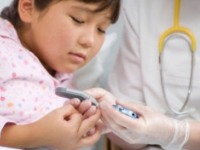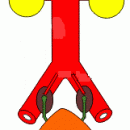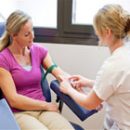What are the symptoms of measles? What are the complications of measles? How treatment and measles prevention? What are there any contraindications for vaccination? Answers to these questions you will find in the article.
Content
Corey
Corey
Corey
Inflammation of mucous membranes, rash. Is one of the most
Infectious diseases. The child can get sick if he visited
room, where 2 hours before him was sick. Almost all contacts
(98%) lead to the disease. The disease is transmitted to air-drip
way.
In the external environment, the virus stands out with mucus when sneezing, cough, conversation. The only one
The source of infection is a sick person who becomes
contasing 3 days before the appearance of rashes and within 4-5 days after
rash.
Cowor Most often children are ill under the age of 4. Children
The first year of life is usually protected by immunity transmitted from the mother
(if the mother earlier was sick or was vaccinated against her), he
Passed in a child until age 1 year. After transferred measles in the body of the passing, persistent life immunity is produced.
Corey symptoms
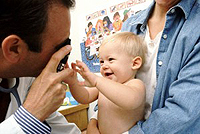
The incubation period lasts 9-11 days. With preventive
Introduction Immunoglobulin It can be designed until 15-21 days. Individual
Disease manifestations are celebrated from the second half of the incubation period
- Reducing the body weight of the child, the swelling of the lower eyelid and hyperemia
(redness) conjunctiva, temperature rise in the evenings, cough,
Low nose. The initial, or the longitudinal period is characterized
Increase body temperature up to 38-39°With, smaller, common
malaise, decrease in appetite. Increased runny nose, appears
rude «barking» cough, sharply expressed hyperemia conjunctive. Appears
Korene Enanthema is small red spots located on the mucous membrane
Soft and solid heaven. Characteristic of measles spots
Belsky Filatova-Soclika - they are located on the mucous membrane of the cheek
and are small whiskers, slightly towering over
The level of mucous membrane specks surrounded by narrow reddish
Cailed, firmly sitting on the mucous membrane. In appearance spots
Filatova-Soclika resemble a semolina cereal or bran. With advent
Exanthemes (rash) they disappear. At the end of the initial period (3-4th day)
body temperature drops, then with the appearance of Korheva rash again
rises to higher numbers. General intoxication and defeat
The respiratory tract is enhanced. Korea Exanthem (rash) is characterized
Stage of rash: In the 1st day, the elements of the rash appear on the face, neck;
on the 2nd day - on the body, hands and hips; on the 3rd day rash captures
shin and feet, and on the face begins to pale. The most dense elements
The rashes are located on the face, neck and top of the body. Rash
Consist of small papules (about 2 mm), surrounded irregular shape
The stain, the diameter of the spot, as a rule, more than 10 mm. The elements of the rash are prone
To the merger, forming complex figures with festral edges. However, even
With the most thick rash, you can detect areas perfectly normal
Skin. In some cases, against the background of the Korea Exanthem, you can see
Hemorrhage (Petechia). After 3-4 days, the elements of the rash will pale, on their
Place remains drowned spots - pigmentation. At the place of rash
Further there is a seduction (resembling bran) peeling
skin and body skin.
In the absence of complications simultaneously with a decrease in temperature and
Breathing is the general condition of the patients improved, catarrhal
Phenomena decrease and disappear, recovery comes.
Depending on the severity of the flow distinguish light, moderate
and heavy shape measles. Especially hard is measured in young children
under the age of 2 years.
In infected persons who during the incubation period
Immunoglobulin prophylactically introduced or transfused blood and
plasma, cortex is easy. It is characterized by increased incubation
period (up to 21 days), usually flows at subfebrile temperature
(up to 38 degrees), Catarial phenomena from the airways
expressed weakly, the stains of the Belsky-Filatov - Soclika no, examine in the form
single elements, without charts characteristic. Complications ne
gives.
Complications
Corey
In 30% of cases, cortex leads to complications. Most often
Complications are found in children under 5 years old and people over 20 years old
Age.
The most common complications - bronchitis, tracheitis,
laryngitis, pneumonia, otitis and other bacterial infections as well
blindness, hearing lesions, mental retardation. In one case on
1000-2000 diseases measles are recorded by encephalitis (usually after 2-21
day after the appearance of rash), often starting with temperature lifting,
Sailor and coma.
Disease is dangerous for pregnant women. If a pregnant woman got sick
Cut, the probability of miscarriage and fetal pathologies is about 20%.
Treatment
Corey
Most patients with corte are treated at home. To the toilet should be carried out
eye, nose, lips. Abundant drinking must meet the need
organism in liquid. Food - full, rich in vitamins, easy
Digested. Symptomatic therapy includes antitussive,
antipyretic, antihistamines. Vitamin A is prescribed (200
000-400,000) inside during the first 2 days - all children of early
age, as well as senior children with severe concomitant
Diseases. Antibiotics are prescribed with bacterial complications:
pneumonia, bronchitis, otitis, and others. With severe patients
Apply corticosteroids (prednisone, hydrocortisone) short course
in a dose to 1 mg / kg human weight. With a brain edema -
Dehydrating (mannitol, lazic) and anti-inflammatory funds,
Preparations of brain circulation.
Prevention
Corey
Currently, the main preventive measure is active
Immunization (vaccinations). The following vaccines are applied: Vaccine Kore
Cultural live dry; MMP II; Ruvaks.
Measles vaccination are spent not sick for children aged
12-15 months. The second vaccination is introduced at the age of 6 (before
school). Cinema vaccination in countries with high morbidity
are held at the age of 9 and even 6 months, in order to protect infants,
in which the disease proceeds especially hard.
Effective vaccination
With proper vaccination, immunity is produced in 95%
vaccinated at the age of 12 months and in 98% vaccinated in
15 months aged 21-28 days after vaccination. Immunity holds
more than 25 years, only a very small number of vaccinated it can
Ugaz.
Adverse reactions
Most children have vaccination is not accompanied by side effects
Reactions. However, in some cases, in the period from 5 to 15 day after
vaccinations, an increase in body temperature may be marked (as a rule, not
Above 39 s), Catarial phenomena (cough, conjunctivitis, runny nose),
Non-human pale pink corppy rash (5% of children), in children,
prone to allergic reactions may be rash in the first hours after
administration of vaccine. Vaccinal reactions usually pass within 2-3
Days. Regardless of the severity of the reaction, the child is not inflicable for
surrounding.
What are there any contraindications for vaccination
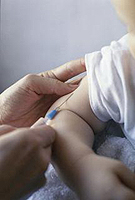
Strong reactions or complications on the previous dose of vaccine.
- If the child received blood preparations (immunoglobulins, plasma
blood), then vaccination is carried out no earlier than 3 months after
The introduction of blood drugs.
- Allergic reactions to antibiotics of the aminoglycoside group
(neomycin, t.To. Each dose of liquid vaccine contains about 25 μg
this drug).
- The presence of allergic reactions to eggs in history. Reaction to
Chicken Egg protein is a contraindication for imported imported
Vaccine, T.To. They are prepared using chicken embryos. When
Reactions to quail eggs, vaccine better make imported vaccine.
- Any acute disease or aggravation of chronic disease.
- Active non-treated tuberculosis.
- Patients receiving immunosuppressive (overwhelming immunity)
Therapy. After the medicinal or radiation immunosuppression of the vaccine
introduced no earlier than after 3 months after use
corticosteroids in high doses - no earlier than after 1 month. after
The end of the course of treatment.
- Patients with blood diseases, leukose, lymphomas of any types
or other malignant tumors affecting bone marrow or
Lymphatic system.
- Primary and acquired immunodeficiency, including AIDS patients
or other clinical manifestations of infection with the virus
Human immunodeficiency. Infected HIV (without pronounced
immunosuppression) vaccination is not contraindicated.
- Pregnancy due to theoretical risk for the fetus.
Preferably, the introduction of measles vaccine in the first 3 days from
the moment of contact with the patient, which is held not sick and not
In graft children older than 12 months, adolescents and adults. In children B
Aged 3-12 months is also possible emergency prevention in the form
Vaccinations.
The introduction of 1 or 2 doses is also possible (depending on the state
Health and time spent on the moment of contact) Immunoglobulin
man normal. Used for children under one year old,
patients with immunodeficiency and pregnant women. This form of prevention
most effective when introducing until the 4th day from the moment of contact.




